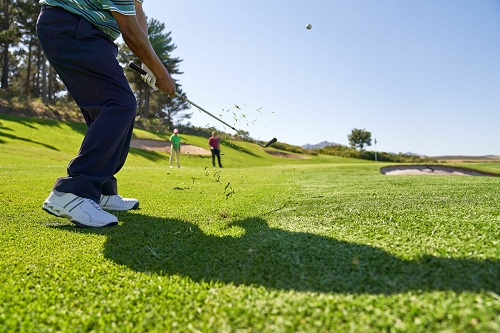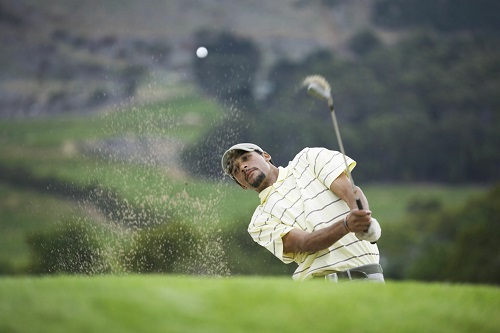A peaceful day on the golf course, the sun shining, the green expanse stretching ahead. However, amid the tranquility, a question arises: Can a golf ball kill you? In this exploration, we delve into the dynamics of golf ball accidents, understanding the risks, and most importantly, uncovering preventive measures to ensure safety on the golf course.
Contents
- The Power Behind a Golf Swing
- The Anatomy of a Golf Ball
- Instances of Golf Ball Accidents
- Can a Golf Ball Break a Bone?
- What Happens if You Get Hit in the Head by a Golf Ball?
- Preventive Measures for Golf Ball Safety
- The Role of Protective Gear
- Safety Protocols on Golf Courses
- Common Misconceptions
- FAQs
- Author
The Power Behind a Golf Swing
Before we address the potential dangers of a golf ball, let’s comprehend the force behind it. A golf swing is not just a mere swing; it’s an unleashing of kinetic energy. The golf ball becomes a projectile, and understanding this force is crucial in grasping the potential risks associated with it.
The Anatomy of a Golf Ball
To comprehend the impact of a golf ball, we must dissect its anatomy. The layers, the core, and the dimples—all contribute to how the ball behaves in flight. This understanding sets the stage for comprehending the potential harm a golf ball can inflict.

Instances of Golf Ball Accidents
While golf is generally a safe sport, incidents involving golf ball accidents are not unheard of. From errant shots to unpredictable bounces, instances of injuries do occur. Examining these real-life situations provides insights into the various scenarios where a golf ball can pose a risk.
Can a Golf Ball Break a Bone?
Certainly! While the likelihood of a golf ball breaking a bone is relatively low, it is not impossible. The force behind a golf swing can result in a powerful impact, and if a golf ball strikes a vulnerable area with sufficient force, it may lead to bone injuries, including fractures.
Although such incidents are rare, players should be aware of the potential risks involved in golfing. Wearing protective gear, such as headgear and body armor, can serve as a crucial precautionary measure.
What Happens if You Get Hit in the Head by a Golf Ball?
Getting hit in the head by a golf ball can have serious consequences, and the impact largely depends on factors such as the speed of the ball, the distance from which it was struck, and the specific circumstances of the incident.
A direct hit to the head with a golf ball can result in injuries ranging from mild to severe, including concussions, lacerations, and, in extreme cases, fractures of the skull. The force generated by a golf swing, combined with the hardness of the golf ball, can lead to significant trauma.
Preventive Measures for Golf Ball Safety
Safety should be paramount on the golf course. Exploring preventive measures is crucial in mitigating the risks associated with golf ball accidents. From increasing awareness to adopting safety protocols, there are practical steps that can significantly reduce the likelihood of injuries.

The Role of Protective Gear
Just as a cyclist wears a helmet or a motorist uses a seatbelt, golfers too can employ protective gear. Understanding the role of items such as headgear and body armor in averting serious injuries adds a layer of defense against the unexpected.
Safety Protocols on Golf Courses
Golf courses are not just serene landscapes; they are environments where safety should be actively managed. Establishing and adhering to safety protocols on golf courses is a shared responsibility among players, course management, and staff.
Common Misconceptions
Dispelling myths is essential in promoting accurate information. Addressing common misconceptions about the dangers of golf balls contributes to a clearer understanding of the actual risks involved in playing the sport.
FAQs
Golf ball speeds can vary, but professional golfers can achieve speeds exceeding 150 mph.
Golf courses play a role in establishing and enforcing safety protocols, but players also share responsibility.
While risks can’t be eliminated, preventive measures significantly reduce the likelihood of accidents

